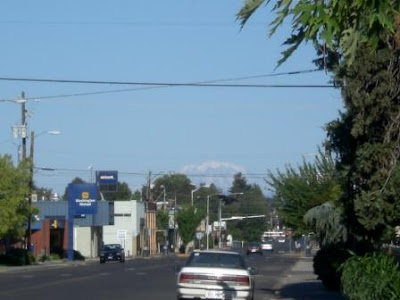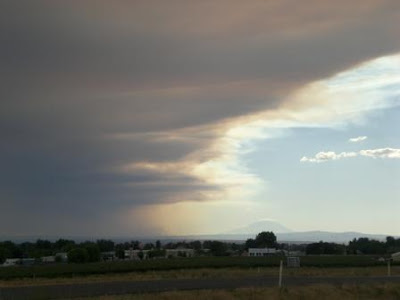
Toppenish is a city of murals. Since the first of these professionally done images was done in 1989, more than seventy have appeared on the walls of the town. The project celebrates the city's history and heritage with images of Native Americans, pioneers, cowboys, agriculture, everyday life, the coming of the railroad, and many other significant people and events.
Did you notice the mountain? You can't get away from it in the Yakima Valley. I took a few other shots when I did this one, and I will return to take you on a better tour at a later date.














